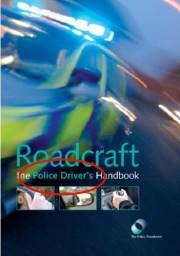I wrote a couple of months ago about how DriveIQ was using raw emotions to try and push its product. They were using the bereaved mother of a girl, who was killed after driving into a tree at 80mph, in order to clearly imply that use of its software would have prevented that tragedy and all others like it!
Well, this story in the Mail suggests that they’re at it again.
In typical Mail fashion, it is hailed as a “new weapon”, when in fact it has been around for  several years in more or less the form it exists in now – the only thing that’s “new” is that the Mail has got hold of it. But the really unsavoury part is that they’re now using a disabled – but, naturally, highly photogenic – teenager to suggest that what happened to her wouldn’t have if she’d have had DriveIQ available to start with. Reading between the lines there is the clear suggestion that her training (and that of all other new drivers) was somehow lacking, and this is particularly galling when you consider how DriveIQ started – as a2om, who tried to claim that it’s then-salaried instructors were better than anyone else.
several years in more or less the form it exists in now – the only thing that’s “new” is that the Mail has got hold of it. But the really unsavoury part is that they’re now using a disabled – but, naturally, highly photogenic – teenager to suggest that what happened to her wouldn’t have if she’d have had DriveIQ available to start with. Reading between the lines there is the clear suggestion that her training (and that of all other new drivers) was somehow lacking, and this is particularly galling when you consider how DriveIQ started – as a2om, who tried to claim that it’s then-salaried instructors were better than anyone else.
The whole story is misleading rubbish.
The girl’s accident involved a car full of drunken teenagers leaving a party, speeding off (her words), flipping into a field, and rolling repeatedly (which suggests grossly excessive speed). Other important details are missing.
I can absolutely guarantee that at no point during her original lessons would she have been told that this was OK, or in any way acceptable behaviour on the roads. I can also guarantee that she will have known that speeding and distraction were dangerous. Only the most stupid of people would not. The problem is that they choose to ignore it and do whatever the hell they want.
The title of the Mail story is:
New weapon in the war against the biggest killer of young people: The cyber road test that stops teenage drivers making the mistake that left me paralysed for life
The story includes lines such as:
Traditional driving lessons concentrate on the technical skills needed to pass the test but have failed to evolve to prevent statistics that show 19 out of 20 road accidents are caused by poor attitude and behaviour, not vehicle-handling skills.
Drive iQ was developed to fill the gaping void in the current learning process.
In our Drive iQ test, Lauren [a new driver] had failed to recognise the dangers we were in [and “crashed”], despite having passed the test to hold a UK licence. If the situation had been real, Lauren would have helped bolster the shocking statistic that one in five young people crashes in the first six months of driving.
If I had had the opportunity to watch the simulation of a crash like mine play out on a computer screen, my life would have turned out very differently.
All of this is highly misleading, and incredibly naive. The author (the disabled girl in question) could have been saved by other, much more reliable ways. How?
Well, if the minimum driving age had been higher, she wouldn’t have been driving that day. If there had been a curfew on young drivers, she probably wouldn’t have been driving from a party (assuming it was a night time party). And if there had been a ban on young drivers carrying passengers, then the distractions she was subject to wouldn’t have been there in the first place. And if she had been driving a car fitted with a black box, she would have been a bit less likely to be driving at such high speed. Most of these things definitely would have prevented her from having an accident on that day. And others would have reduced the risk dramatically.
But there is no way that a computer simulation could make the same claims.
I’m not saying that road safety shouldn’t be taught in schools, and I’m not saying that DriveIQ is useless. But the claims being made for these things are just total rubbish!
The article also mentions the fact that the teenage brain doesn’t properly mature until the early to mid-20s, and still doesn’t make the connection that this cannot be hurried by sitting in front of a computer.
 Anyone who has a copy of this should occasionally turn around and make sure they haven’t let reality slip out of their sight.
Anyone who has a copy of this should occasionally turn around and make sure they haven’t let reality slip out of their sight. aching, but never – for even a moment – have I attributed it to the standard of someone’s education. In fact,
aching, but never – for even a moment – have I attributed it to the standard of someone’s education. In fact,  during the test.
during the test.
 several years in more or less the form it exists in now – the only thing that’s “new” is that the Mail has got hold of it. But the really unsavoury part is that they’re now using a disabled – but, naturally, highly photogenic – teenager to suggest that what happened to her wouldn’t have if she’d have had DriveIQ available to start with. Reading between the lines there is the clear suggestion that her training (and that of all other new drivers) was somehow lacking, and this is particularly galling when you consider how DriveIQ started – as a2om, who tried to claim that it’s then-salaried instructors were better than anyone else.
several years in more or less the form it exists in now – the only thing that’s “new” is that the Mail has got hold of it. But the really unsavoury part is that they’re now using a disabled – but, naturally, highly photogenic – teenager to suggest that what happened to her wouldn’t have if she’d have had DriveIQ available to start with. Reading between the lines there is the clear suggestion that her training (and that of all other new drivers) was somehow lacking, and this is particularly galling when you consider how DriveIQ started – as a2om, who tried to claim that it’s then-salaried instructors were better than anyone else.